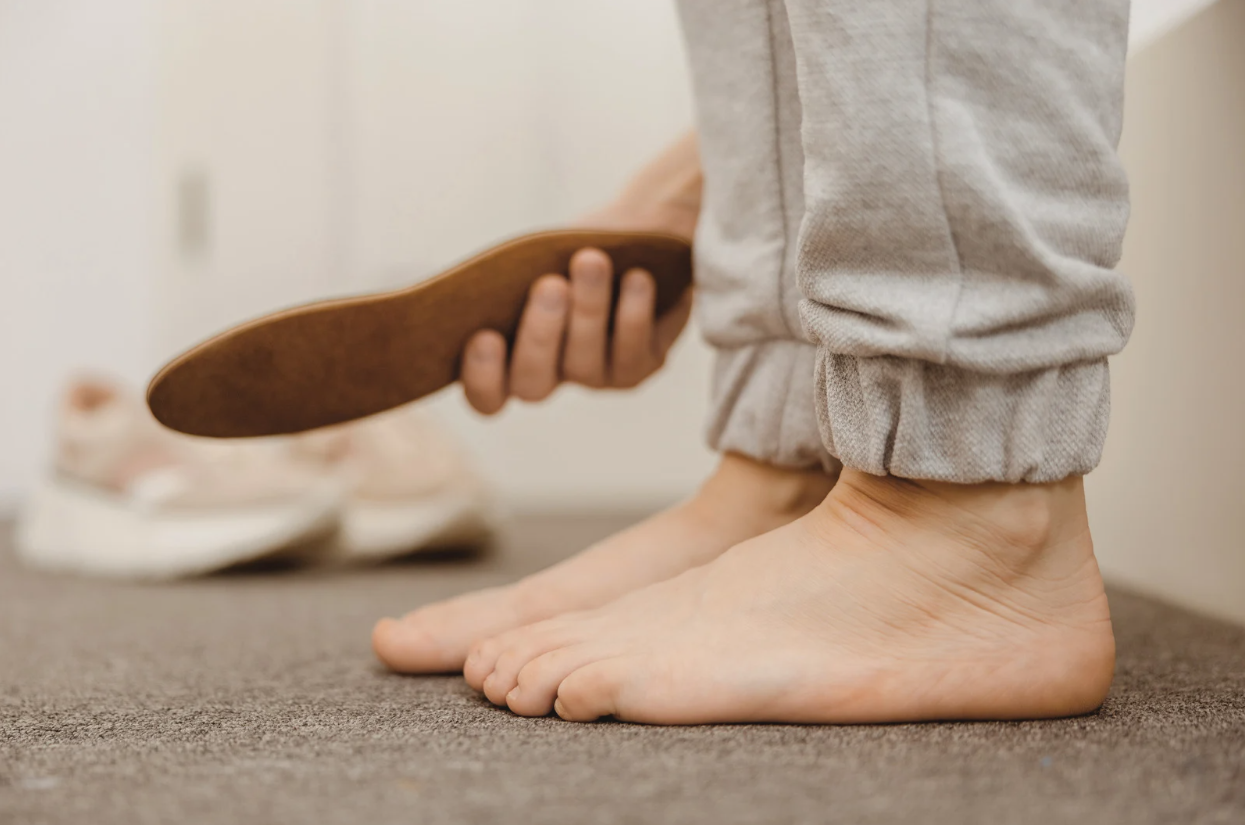Flat feet, also known as fallen arches, occur when the arches of the feet do not develop properly or collapse over time. This condition can lead to foot pain, overpronation (excessive inward rolling of the feet), and even discomfort in the knees, hips, and lower back. If you have flat feet, choosing the right shoes is essential to maintaining proper foot alignment, reducing pain, and preventing long-term complications.
In this guide, we’ll walk you through how to pick the right shoes for flat feet, including what features to look for, top shoe recommendations, and additional tips for foot health.
Why Shoe Choice Matters for Flat Feet
Because flat feet lack a natural arch, they don’t absorb shock as efficiently as feet with normal arches. This can lead to:
-
Foot pain and fatigue after prolonged standing or walking.
-
Overpronation, which can cause knee, hip, and lower back discomfort.
-
Increased risk of plantar fasciitis, shin splints, and other foot conditions.
Wearing supportive and properly fitted shoes helps distribute weight evenly, improves alignment, and minimizes strain on the feet and joints.
What to Look for in Shoes for Flat Feet
When shopping for shoes, keep the following features in mind:
1. Arch Support - Shoes with built-in arch support help provide the structure that flat feet naturally lack, reducing strain and discomfort. Look for shoes with a contoured footbed or motion-control technology to support your arches properly.
2. Firm Midsole and Stability Features - A firm midsole prevents excessive foot rolling (overpronation) and provides stability. Motion-control or stability shoes help keep your feet aligned while walking or running.
3. Cushioned Footbed - Shoes with extra cushioning—such as EVA foam or gel insoles—help absorb impact and reduce stress on the heels and arches. This is particularly important for active individuals who spend long hours on their feet.
4. Wide Toe Box - A roomy toe box prevents unnecessary pressure on the forefoot, allowing your toes to spread naturally and improving balance.
5. Deep Heel Cup - A deep heel cup helps stabilize the back of the foot and aligns it properly, preventing inward rolling and reducing strain on the arches.
6. Durable, Non-Flexible Outsole - A sturdy, non-flexible outsole prevents excessive foot movement and keeps your feet supported throughout the day. Avoid ultra-flexible or minimalist shoes, as they may worsen overpronation.
Best Types of Shoes for Flat Feet
Whether you need shoes for running, walking, work, or casual wear, choosing the right pair is key. Here are some of the best options:
Best Running Shoes for Flat Feet
-
Brooks Adrenaline GTS 23 – Features GuideRails support system to control overpronation and maintain proper foot alignment.
-
ASICS Gel-Kayano 30 – Offers gel cushioning and stability technology, perfect for flat-footed runners.
-
Saucony Guide 16 – A lightweight stability shoe with great arch support and shock absorption.
Best Walking Shoes for Flat Feet
-
New Balance 1540v3 – A motion-control walking shoe with firm arch support and plush cushioning.
-
Brooks Addiction Walker – Features a slip-resistant outsole and biomechanical support, ideal for all-day wear.
-
Xelero Steadfast – Packed with support and great for those who need stability in a more athletic, versatile style.
Best Work Shoes & Boots for Flat Feet
-
Dunham 8000 Work Boot – Excellent arch support, waterproof protection, and a slip-resistant outsole for all outdoor jobs, warehouse work, or service industry roles.
-
HOKA Bondi SR – A highly cushioned work shoe with extra support for long hours on your feet.
-
SAS Time Out – Firm arch support, thick cushioned sole, and an orthopedic footbed that helps with alignment.
Best Casual Shoes for Flat Feet
-
Birkenstock Arizona Soft Footbed Sandals – A contoured cork footbed molds to your feet for custom support.
-
Alegria Keli – Footbed that molds to the natural contours of your feet, providing customized arch support, proper alignment, and can accommodate custom orthotics.
-
Ecco Soft 7 Sneakers – A stylish sneaker with cushioned insoles and anatomical support.
Best Orthopedic Shoes for Severe Flat Feet
-
HOKA Gaviota – A motion-control running shoe with maximum support for severe overpronation.
-
Xelero Genesis – A solid workhorse shoe for walking or casual wear. Good cushioning and a structured midsole to reduce arch collapse.
Additional Tips for Managing Flat Feet
1. Use Orthotic Insoles - If your shoes lack proper arch support, consider adding custom or over-the-counter orthotic insoles to provide extra stability. Click Here to schedule a booking for custom orthotics.
2. Stretch and Strengthen Your Feet - Perform exercises like toe curls, arch lifts, and calf stretches to strengthen foot muscles and improve mobility.
3. Avoid Unsupportive Shoes - Stay away from flat sandals, flip-flops, high heels, and flexible minimalist shoes, as they lack the necessary support for flat feet.
4. Replace Worn-Out Shoes Regularly - Shoes lose their support over time. Replace running shoes every 300-500 miles and everyday shoes when they show signs of wear.
Choosing the right shoes for flat feet is essential for maintaining comfort, support, and foot health. Look for arch support, cushioning, stability features, and a firm midsole to keep your feet properly aligned. Whether you're a runner, walker, or someone who spends long hours on your feet, the right footwear can prevent pain and improve your overall quality of life.

